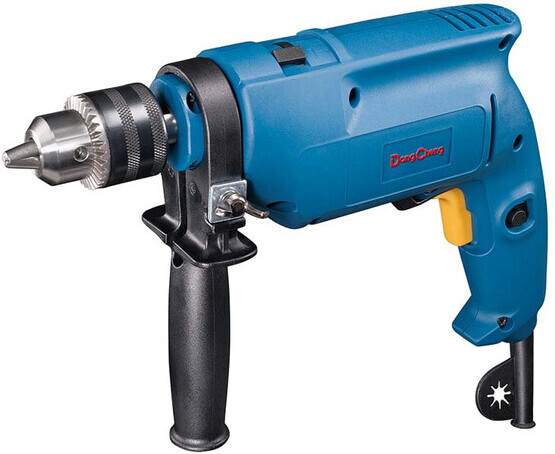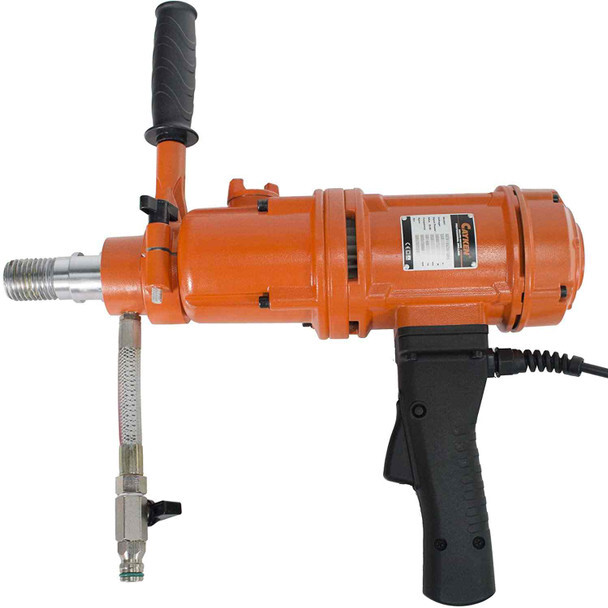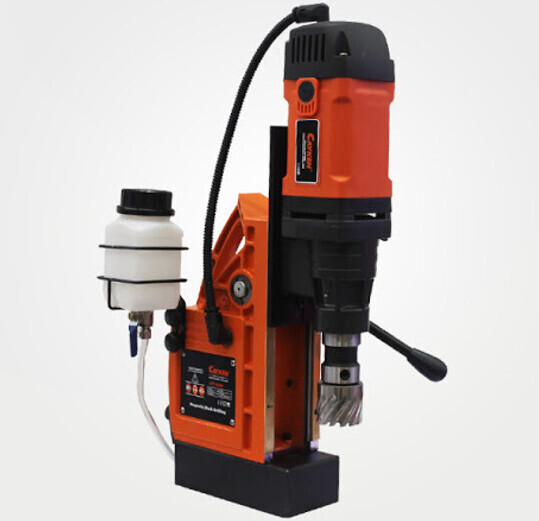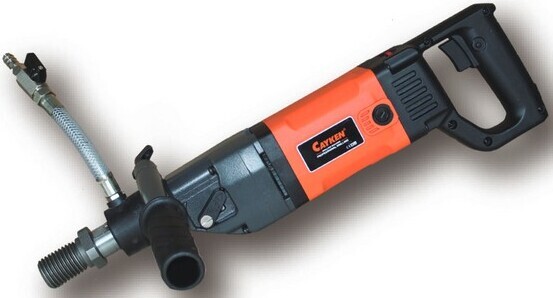What is a Drilling Machine? Everything You Need to Know
Introduction
Drilling machines are fundamental tools used in many industries, from construction to manufacturing. Their ability to drill precise holes in various materials makes them invaluable. Whether you’re building machinery parts, creating structures, or working on custom projects, drilling machines, significantly enhance productivity, accuracy, and efficiency. This guide will take you through everything you need to know about drilling machines, what they are, their purpose, types, applications, and how they work.
Learn more:
Key Takeaway
-
Definition – A drilling machine is a power-driven tool used to create holes in various materials like metal, wood, and concrete.
-
Types of Drilling Machines – Common types include bench drills, pillar drills, radial drills, and CNC drilling machines, each designed for specific applications.
-
Components – Key parts include the spindle, drill bit, chuck, column, table, and base, all working together to ensure precision drilling.
-
Working Principle – It operates by rotating a drill bit at high speed while applying downward force to cut through the material.
DongCheng Electric Impact Drill 13mm, 500W DZJ02-13
What is a Drilling Machine?
A drilling machine is a type of industrial machinery designed specifically to create holes in materials like metal, wood, plastic, and other solid substances. It operates by rotating a drill bit at high speed and applying pressure to the material to create a hole of desired size and depth.
These machines typically consist of several components, including the base, column, spindle, feed mechanism, and drill chuck. The machine may be powered manually or electrically, depending on the type, and it allows for both horizontal and vertical drilling.
Drilling machines come in various designs, each tailored for specific needs, such as mass production, high-precision work, or portability for field operations.
Purpose and Functionality
The primary function of a drilling machine is to create accurate and consistent holes in a wide range of materials. This capability is critical in many industries, including manufacturing, construction, automotive, and aerospace.
Some key reasons why drilling machines are indispensable:
- Precision: Drilling machines are capable of producing holes with extreme accuracy, crucial for components that need to fit together seamlessly in mechanical assemblies.
- Versatility: They can handle a variety of materials, from softwoods and plastics to hard metals, and can be adjusted to drill holes of different sizes and depths.
- Efficiency: Automated systems like CNC drilling machines can run continuously, producing hundreds or thousands of parts in a short amount of time, making them perfect for large-scale manufacturing.
- Safety: Compared to manual methods, modern drilling machines often come equipped with safety features like automatic shutoff, dust collection, and protective shields.
Handheld Diamond Core Drill SCY-1520/2BS Cayken
Types of Drilling Machines
There are several types of drilling machines, each suited to different applications. Let’s explore the most common ones:
Bench Drilling Machine
This is one of the most basic and compact types of drilling machines. It’s designed to sit on a bench or worktable, making it ideal for small-scale operations and hobbyists. It’s suitable for drilling holes in lighter materials like wood, plastics, and light metals. Bench drilling machines are simple to operate and are often found in smaller workshops.
Radial Drilling Machine
Radial drilling machines are more versatile and can handle larger workpieces. The drill head can be moved along the radial arm to adjust for different positions and angles. This feature makes them ideal for operations where the workpiece needs to be repositioned frequently. Common applications include heavy-duty manufacturing, such as drilling holes for large industrial components.
Pillar Drilling Machine
Pillar drilling machines are larger, stationary devices that provide more stability and precision. They are typically used in medium to heavy-duty operations. The pillar supports the drill head, and it’s often mounted on a base with a vertical column, allowing for more consistent drilling depth. These machines are widely used in the automotive industry, construction, and metalworking.
CNC Drilling Machine
CNC (Computer Numerical Control) drilling machines are automated and highly accurate. They use computer programs to control the movement of the drill bit, making them perfect for producing parts in high volumes with minimal human intervention. CNC drilling machines are a staple in industries like aerospace, electronics, and precision manufacturing, where exact measurements are critical.
Portable Drilling Machine
As the name suggests, portable drilling machines are compact and easy to move from one location to another. These machines are essential in construction, repair, and maintenance activities where a stationary machine isn’t practical. They are perfect for fieldwork, such as drilling holes in structural steel or concrete.
Vertical and Horizontal Drilling Machines
Drilling machines can be categorized based on the orientation of the spindle. Vertical drilling machines have a vertically aligned spindle, making them suitable for drilling holes at right angles to the work surface. On the other hand, horizontal drilling machines feature a horizontally positioned spindle, ideal for drilling large, heavy workpieces. The choice of vertical vs. horizontal depends on the workpiece size and the drilling operation.
DongCheng Cordless Brushless Driver Drill DCJZ04-13 (Type AM/EM/Z)
Key Features of a Drilling Machine
Drilling machines come equipped with various features that enhance their functionality, precision, and ease of use. Some key features include:
-
Motor Power and Speed Variations: Drilling machines have motors of varying power, which allows them to drill through different materials. The speed can often be adjusted depending on the material and the size of the hole required.
-
Feed Mechanism: The feed mechanism is responsible for moving the drill bit into the workpiece. It can be manual, automatic, or semi-automatic, depending on the machine type. Automated feed mechanisms improve the consistency and accuracy of drilling operations.
-
Depth and Diameter Adjustments: Many drilling machines offer the ability to control the depth and diameter of the hole being drilled. This feature is crucial when working with materials that need specific hole sizes for fitting or assembly.
-
Chuck Types: The chuck is the part of the drilling machine that holds the drill bit. Keyless chucks allow for quick changes between bits, while keyed chucks use a key to tighten and loosen the chuck, offering a more secure hold, especially for heavier operations.
-
Drilling Accuracy: Modern drilling machines come with advanced control systems to ensure precise hole placement. This is essential in industries where tolerances are tight, and precision is paramount.
Advantages of Using Drilling Machines
Drilling machines offer numerous benefits across various applications. Below are some key advantages:
-
Precision and Accuracy: Drilling machines are engineered to produce highly accurate holes, reducing the chances of errors in the manufacturing process. This precision is critical in industries like aerospace, automotive, and electronics, where even the smallest variation in hole size or placement can cause functional issues.
-
Enhanced Efficiency: With the use of automated drilling machines, especially CNC models, the production process becomes faster and more efficient. These machines can run continuously, producing high volumes of identical parts with minimal downtime, making them essential for mass production.
-
Reduced Manual Labor: The introduction of automated features, such as feed mechanisms and CNC control systems, minimizes the need for manual intervention. This not only increases productivity but also reduces the physical strain on workers.
-
Versatility in Material Compatibility: Drilling machines are adaptable to a wide range of materials, including metals, plastics, wood, and composites. This versatility makes them a go-to tool for industries with diverse production needs.
-
Improved Safety Standards: Modern drilling machines come with built-in safety features like automatic shutoff mechanisms, emergency stop buttons, and safety covers to protect workers from injuries. These features ensure that drilling operations can be carried out safely and efficiently.
Magnetic Core Drilling Machine SCY-35HD Cayken
Common Applications of Drilling Machines
Drilling machines have widespread applications across various industries. Below are some of the most common uses:
Manufacturing Industry
In manufacturing, drilling machines are used extensively for creating holes in metal, plastic, and composite materials. These holes are essential for assembly, fastening, and the creation of components like shafts, gears, and housings. CNC drilling machines, in particular, are used for mass production of parts with high precision.
Construction Industry
Drilling machines in construction are used for tasks such as drilling anchor holes in concrete, making holes for electrical conduits, or creating holes for bolts and fasteners. They also play a key role in the installation of heavy machinery and the building of structural frameworks.
Automotive and Aerospace
In industries like automotive and aerospace, drilling machines are used for precision work. Components such as engine parts, turbine blades, and aircraft fuselage sections require holes drilled with extreme accuracy to ensure they fit together correctly and function as needed.
Woodworking
Drilling machines also play a role in woodworking, where they are used to create holes for dowels, screws, or other fasteners. They can also be used in the creation of intricate designs and furniture components. While bench drills are common in this field, larger pillar and radial drills can handle larger wooden parts.
Maintenance and Repair
Portable drilling machines are particularly useful in the maintenance and repair sectors. Technicians use them to drill into machinery, pipes, or structural elements that need modification or repair, even in remote or hard-to-reach locations.
Drilling Machine Maintenance Tips
Regular maintenance is crucial to keep drilling machines running smoothly and extend their lifespan. Here are some essential maintenance tips:
-
Regular Cleaning and Lubrication: Clean the machine after every use to remove debris, dust, and metal shavings. Lubricating moving parts like the spindle and feed mechanisms ensures smooth operation and reduces wear and tear.
-
Checking and Replacing Worn-Out Parts: Drill bits and other components can wear out over time. Regularly inspect the bits and replace them when they lose their sharpness or develop defects. This ensures that the holes are drilled accurately and the machine operates efficiently.
-
Proper Calibration: To maintain drilling accuracy, calibrate the machine regularly. Ensure that the spindle and feed mechanisms are aligned correctly and that the machine is set to the desired depth and speed.
-
Storage and Handling: Store the machine in a dry, clean environment to prevent rusting or damage. When moving the machine, handle it carefully to avoid misaligning any parts or causing damage.
-
Routine Inspections: Perform regular inspections to detect any signs of wear or damage. If any part of the machine is malfunctioning, address it immediately to avoid further issues and ensure operational safety.
Diamond Core Drilling Machine SCY-18/2EBM Cayken
Safety Precautions When Using Drilling Machines
Safety is paramount when working with drilling machines. Here are some important precautions to take:
-
Wear Appropriate Safety Gear: Always wear protective goggles, gloves, and ear protection when operating drilling machines. Depending on the material being drilled, additional protective equipment like face shields or respirators may be necessary.
-
Set Up a Stable Work Environment: Ensure that the workpiece is securely fastened to the machine to prevent accidents. A stable environment reduces the chances of the machine tipping or shifting unexpectedly.
-
Follow the Machine’s Manual: Read and follow the manufacturer's instructions and operating guidelines. This will help you understand how the machine operates and ensure you're using it correctly.
-
Keep Hands and Clothing Away from Moving Parts: Avoid placing your hands near rotating parts, and ensure your clothing is tightly secured to prevent it from getting caught in the machinery.
-
Handle and Dispose of Hazardous Materials Safely: Some materials, especially metals, can create hazardous dust or chips during drilling. Always use the proper dust collection systems and dispose of waste material according to safety protocols.
Frequently Asked Questions
1. What are the different types of drill bits used in drilling machines?
The most common types of drill bits include twist bits, spade bits, brad-point bits, and carbide-tipped bits. The choice of drill bit depends on the material being drilled and the hole size required.
2. How do I choose the right drilling machine for my needs?
The right drilling machine depends on the scale of your operations, the material you're working with, and the type of holes you need. For large-scale production, CNC or radial drilling machines may be best, while bench drills are ideal for smaller projects.
3. Can a drilling machine be used for other operations apart from drilling?
Yes, many drilling machines are versatile and can perform additional operations like tapping (creating threads), reaming (enlarging holes), and countersinking (creating a conical hole).
4. How often should I maintain my drilling machine?
Maintenance should be performed regularly, including cleaning after every use, lubrication of moving parts, and checking for any wear or damage. Routine inspection every few months is also recommended.
5. Is it safe to use a drilling machine without experience?
While modern drilling machines come with safety features, it’s essential to have proper training before using them. Always follow the manufacturer’s instructions, wear safety gear, and start with simple tasks until you become familiar with the machine.
Related Article:
Drilling Machine Parts: A Complete Guide
Conclusion
Drilling machines are an essential tool in a wide range of industries, from manufacturing to construction and maintenance. They offer precision, efficiency, and versatility, making them indispensable for creating holes in various materials with high accuracy. As technology continues to advance, drilling machines are becoming more automated, precise, and energy-efficient. Whether you're working on small-scale projects or large industrial operations, understanding the different types of drilling machines, their features, and how to use them safely and effectively is crucial for success.
Looking to invest in high-quality drilling machines or accessories? Visit GZ Industrial Supplies for a wide range of industrial tools and equipment, including top-rated drilling machines designed to meet your specific needs. Whether you're in manufacturing, construction, or maintenance, we have the right equipment to help you get the job done efficiently and safely. Explore our website today for more information on our products and services!
Recent Posts
-
Why Serious Mechanics Are Switching to Japanese-Made Shinano Air Tools
Japanese-Made Shinano Air Tools Key takeaway: Shinano’s tight-tolerance, twin-hammer designs d …Apr 24, 2025 -
Top 10 Hand Tool Brands for Professionals
Introduction When it comes to professional hand tools, quality, durability, and reliability are para …Apr 23, 2025 -
HOW DOES CORROSION INHIBITOR WORK
Introduction Corrosion has posed a lot of problems to various companies and industries; by interfer …Apr 22, 2025








